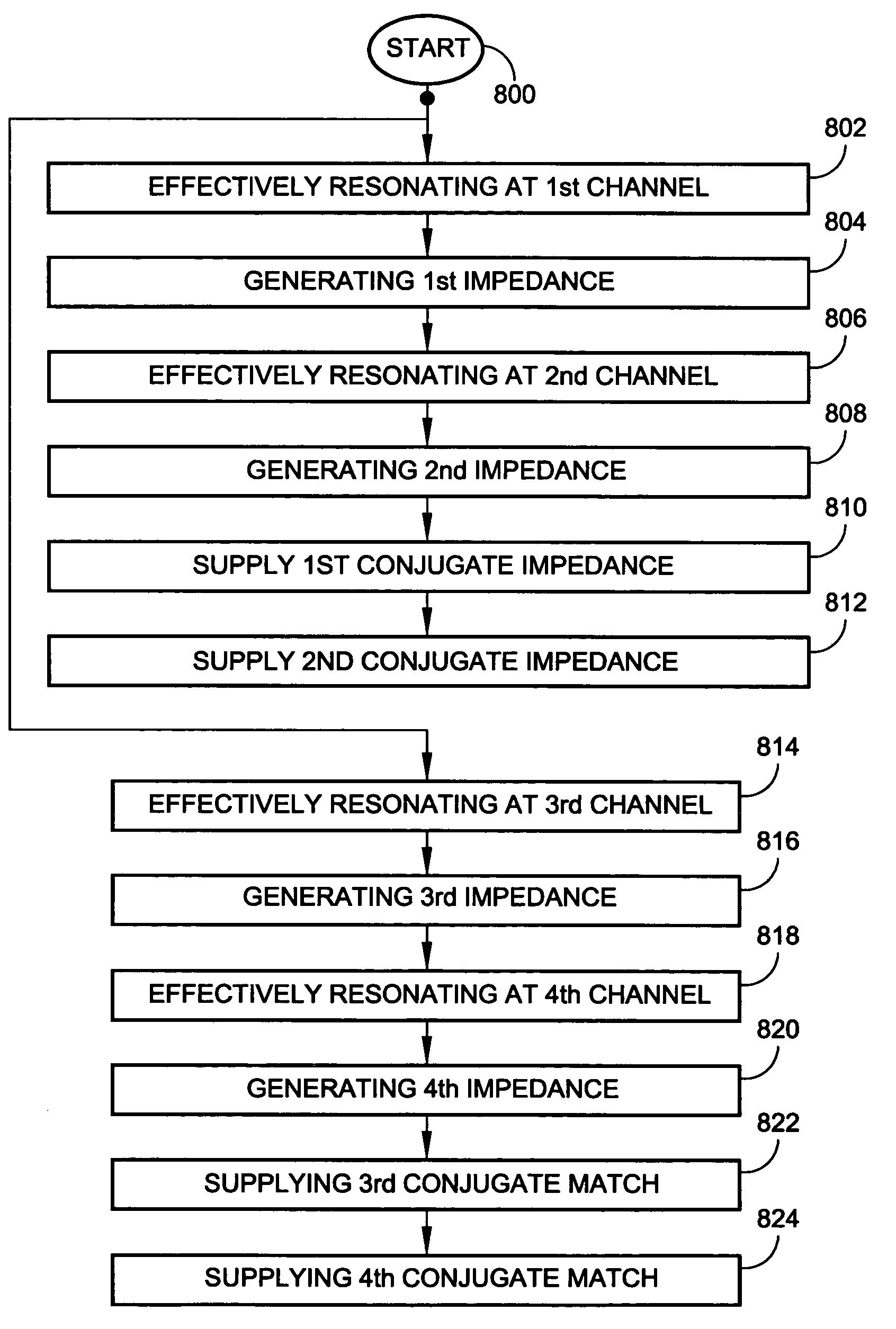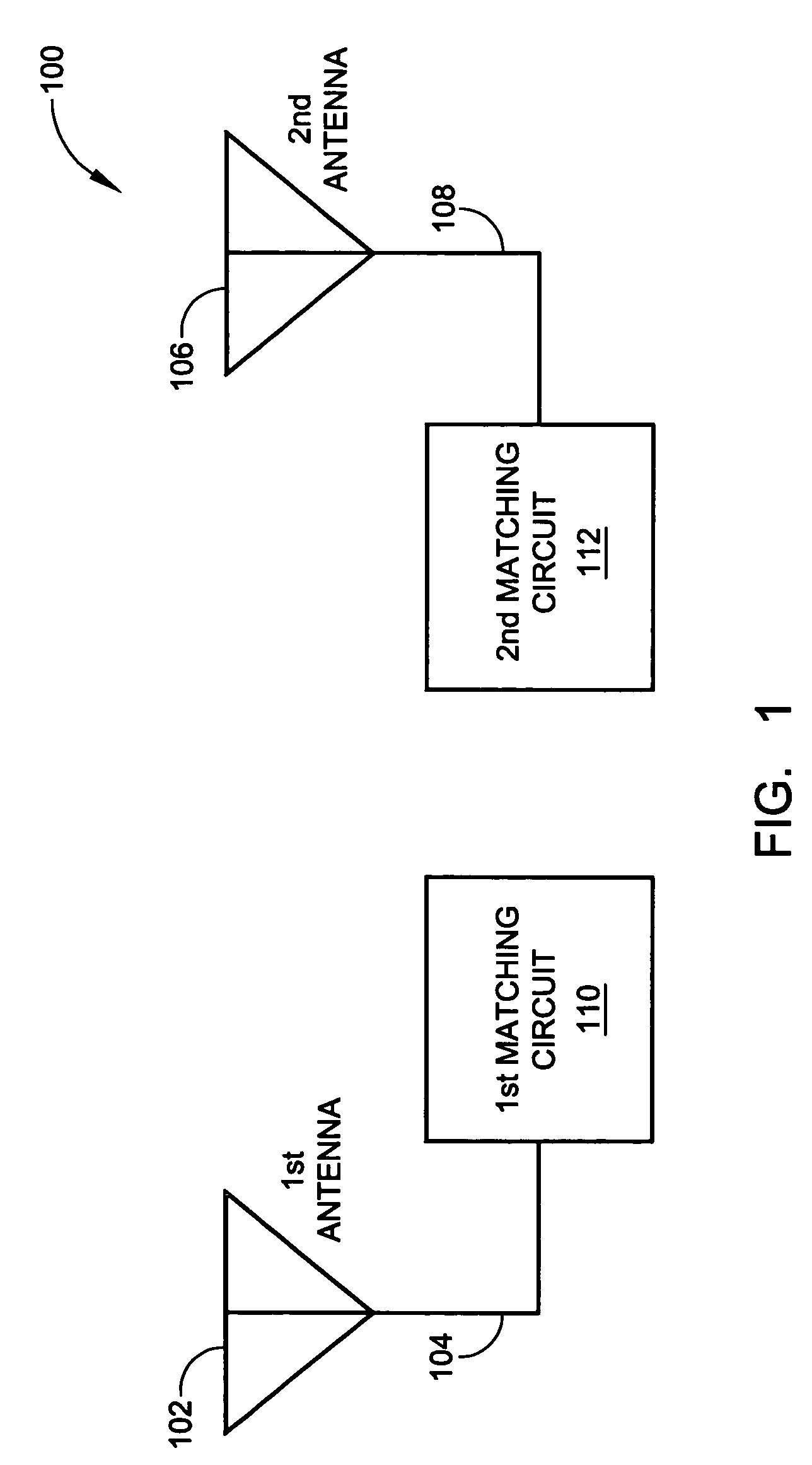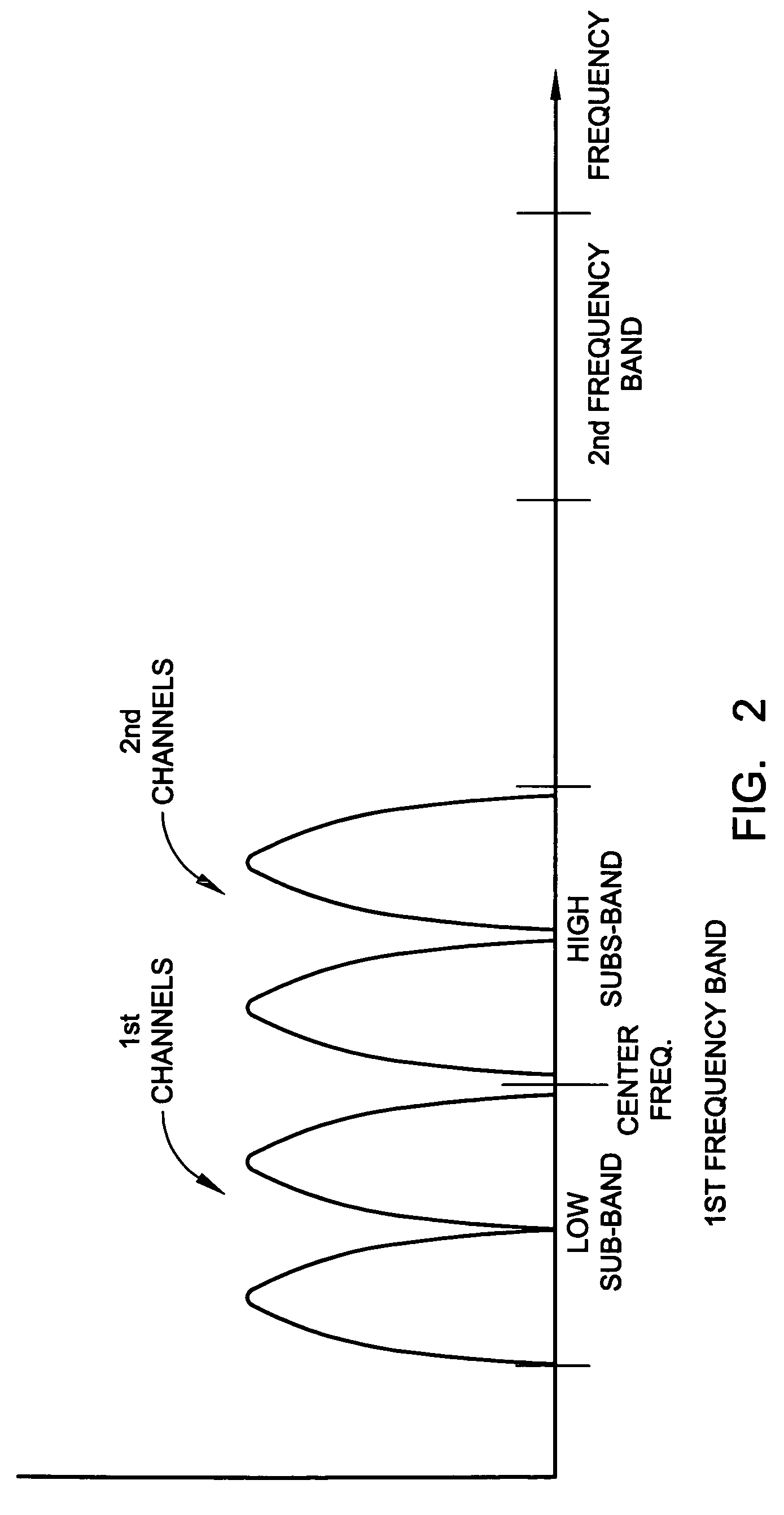Full-duplex antenna system and method
a full-duplex antenna and antenna matching technology, applied in the field of full-duplex antenna systems and antenna matching circuitry, can solve the problems of insufficient design to cover all the required frequencies, affecting the performance of gps and pcs, and affecting the performance of cellular band performance,
- Summary
- Abstract
- Description
- Claims
- Application Information
AI Technical Summary
Benefits of technology
Problems solved by technology
Method used
Image
Examples
Embodiment Construction
[0034]FIG. 1 is a schematic block diagram of the present invention full-duplex antenna system for selectively tuning communication channels. The system 100 comprises a first antenna 102 that is effectively resonant at a frequency selectable first channel in a first frequency band. Depending upon the communication system, the first channel has a minimum frequency span that varies from several kilohertz, to megahertz (MHz). Depending on the selectivity, the frequency span may be wide enough to cover several adjacent channels. The first antenna 102 has an interface port on line 104 with a first impedance at the first channel frequency.
[0035]A second antenna 106 is effectively resonant at a frequency selectable second channel in the first frequency band. The second antenna 106 has an interface on line 108 with a second impedance at the second channel frequency. A first matching circuit 110 includes a port connected on line 104 to the first antenna interface port having a first conjugate...
PUM
 Login to View More
Login to View More Abstract
Description
Claims
Application Information
 Login to View More
Login to View More - R&D
- Intellectual Property
- Life Sciences
- Materials
- Tech Scout
- Unparalleled Data Quality
- Higher Quality Content
- 60% Fewer Hallucinations
Browse by: Latest US Patents, China's latest patents, Technical Efficacy Thesaurus, Application Domain, Technology Topic, Popular Technical Reports.
© 2025 PatSnap. All rights reserved.Legal|Privacy policy|Modern Slavery Act Transparency Statement|Sitemap|About US| Contact US: help@patsnap.com



